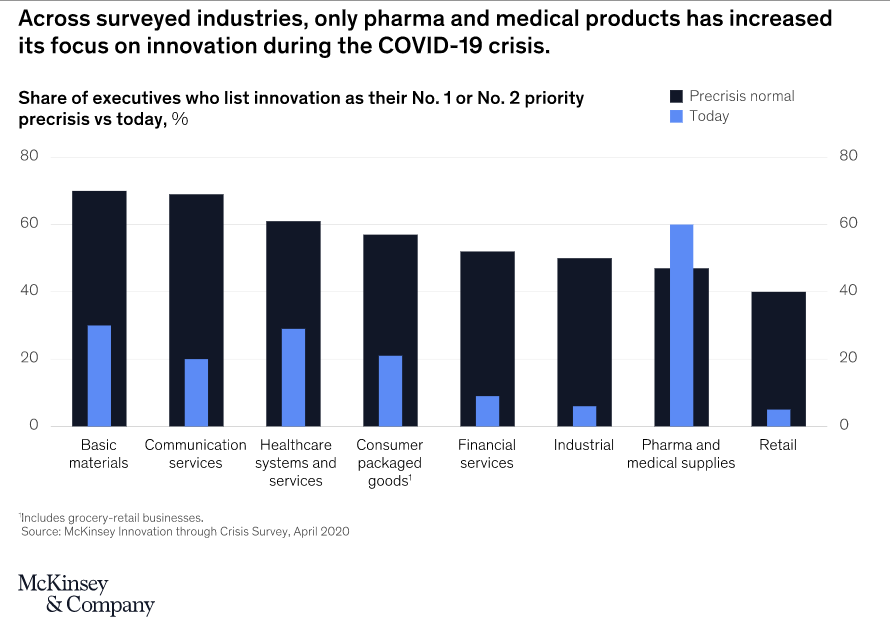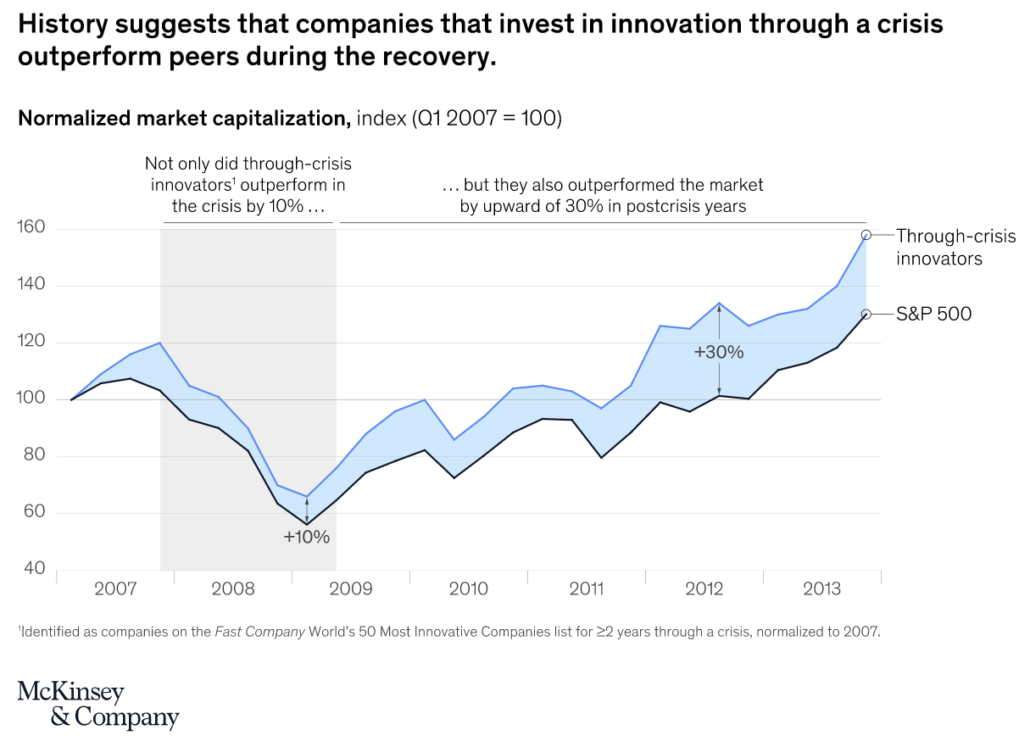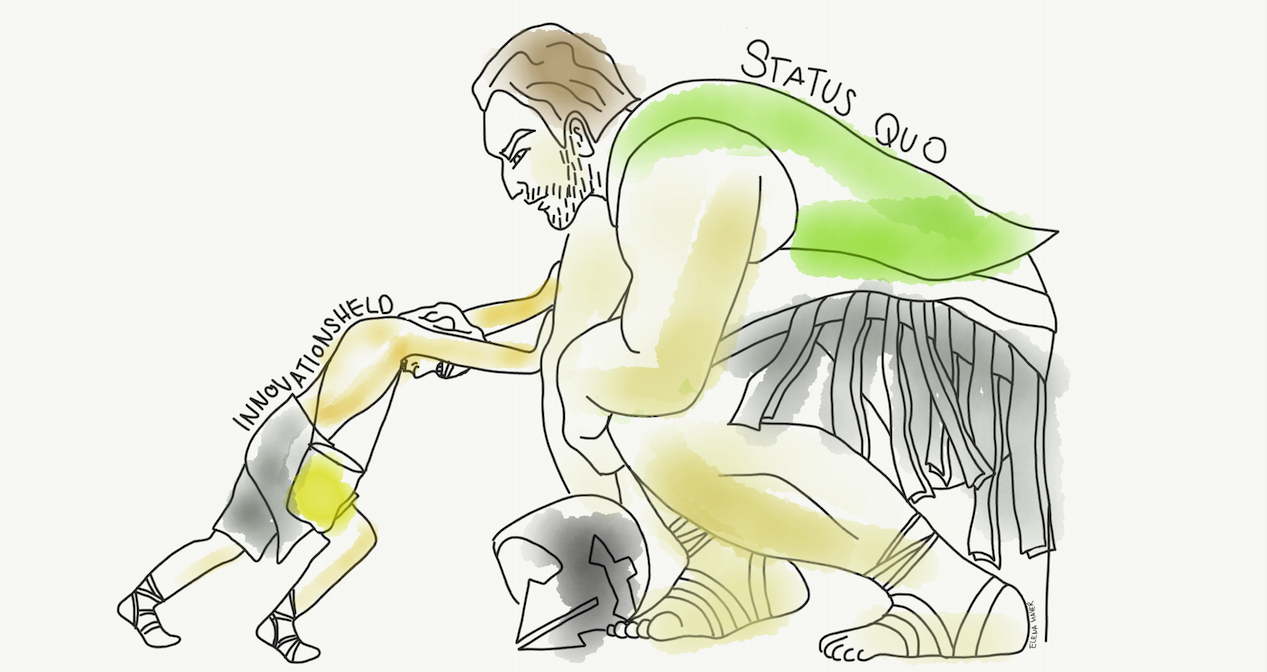Innovation is the key to securing growth. This is more important than ever. But: innovation stands still in most companies.
Companies are currently investing the majority of their resources in their core business in order to restore the status quo as quickly as possible. At the same time, they know that the effects of COVID-19 will fundamentally change the way they earn their money in the future. …. this is a paradox to me!
Innovation could be the hero of this crisis. However, in most companies it is currently losing the fight against the status quo. We are too casual with innovation. If companies are not strategically focused on innovation, efforts will water down quickly and will be discontinued after 3 to 5 years at the latest. Because the results are missing. What we need, is the change from a „casual dating mentality“ to a strategic „always-on engagement“. According to Elvin Turner, professor and author of „Be Less Zombie„, innovative powerhouses like Amazon, Google, Pixar, Netflix do just that:
“A targeted, never-ending focus on innovation. Strategically in line with corporate goals and deeply embedded in the company and its culture. Adequately equipped and rewarded sensibly throughout the company. „
Elvin Turner
In most companies, each area is supposed to generate innovations within the scope of its own possibilities. Unfortunately, this rarely works. The resulting innovations are incremental rather than disruptive, small advances in a mature industry. A repackaging of existing products with some additional functionality. A strategy that only works in the short term, low-hanging fruits that come at the expense of long-term growth.
A recent McKinsey article said, „Prioritizing innovation today is the key to unlocking postcrisis growth.“ Because every crisis offers opportunities, and the future will be here, sooner than we can imagine.
A paradox between talking and doing
Executives that took part in a McKinsey survey of over 200 companies across industries, believe that they will return to innovation projects once the world has stabilized, once their core business is safe and once the way forward is clearer. Only a quarter reported that discovering new growth is a top priority today.
Paradoxically, 90 percent of the same executives said that the impact of COVID-19 will fundamentally change the way they make money over the next five years. And that the crisis has a lasting impact on the needs of their customers. To me, that sounds like a shift in business fundamentals. This allows foresight today, change, that requires bold innovations, not small incremental steps.

According to the research, the decline in innovation is evident in most industries, the financial and industrial sectors stand out, due to their particular drama. This is fatal and an opportunity for companies in these industries who invest in innovation. They will stand out.
Managers today have the opportunity to enable sustainable, future growth through innovation. This has lasting, positive consequences for the growth ability of their company in the coming years. In the current situation, playing it safe is a very short-sighted decision.

A plea for innovation
McKinsey concludes that most companies postpone innovation to focus on four things:
- Maintaining + ensure core business continuity
- Tracking known business areas
- Cutting costs and save money
- Minimize risk and wait for „more clarity“
According to McKinsey, the urgent measures today are:
- Adapting the core to meet shifting customer needs
- identifying and quickly addressing new opportunities that are emerging today
- Re-evaluating the innovation portfolio and securing adequate resources
- Creating a foundation for post-crisis growth to be competitive in the recovery phase
Most businesses simply cannot operate as they have in the past.
What made a company successful historically no longer applies during or after the crisis: customers may have payment difficulties. The distribution channels may have changed radically to meet new requirements or to circumvent new restrictions. A stable regulatory context may have changed completely. The basic assumptions for stable, predictable growth may be completely upside down.
How does the step into innovation succeed?
As a first step, a look at Elvin Turner’s „Strategic Drivers for Innovation“ helps. They clarifies the „WHY“ of innovation:
1. Alignment with corporate strategy: What overall strategic direction does innovation have to support?
2. Financial renewal: What levels of growth and renewal are required to achieve the financial results demanded today and in the future?
3. Customer insights: What is most important for customers today and in the future? Who will be the customer in the future?
4. Portfolio: Do we have the right balance and flow of new and existing products and services in the pipeline?
5. Future Trends: How could your future success be impacted by emerging trends?
It’s time for bold innovations!
If you need help getting started, setting guidelines for innovation and building a successful innovation ecosystem – contact me. I am happy to help and with the aim that they quickly have a tailored innovation ecosystem up and running and no longer need outside help.







